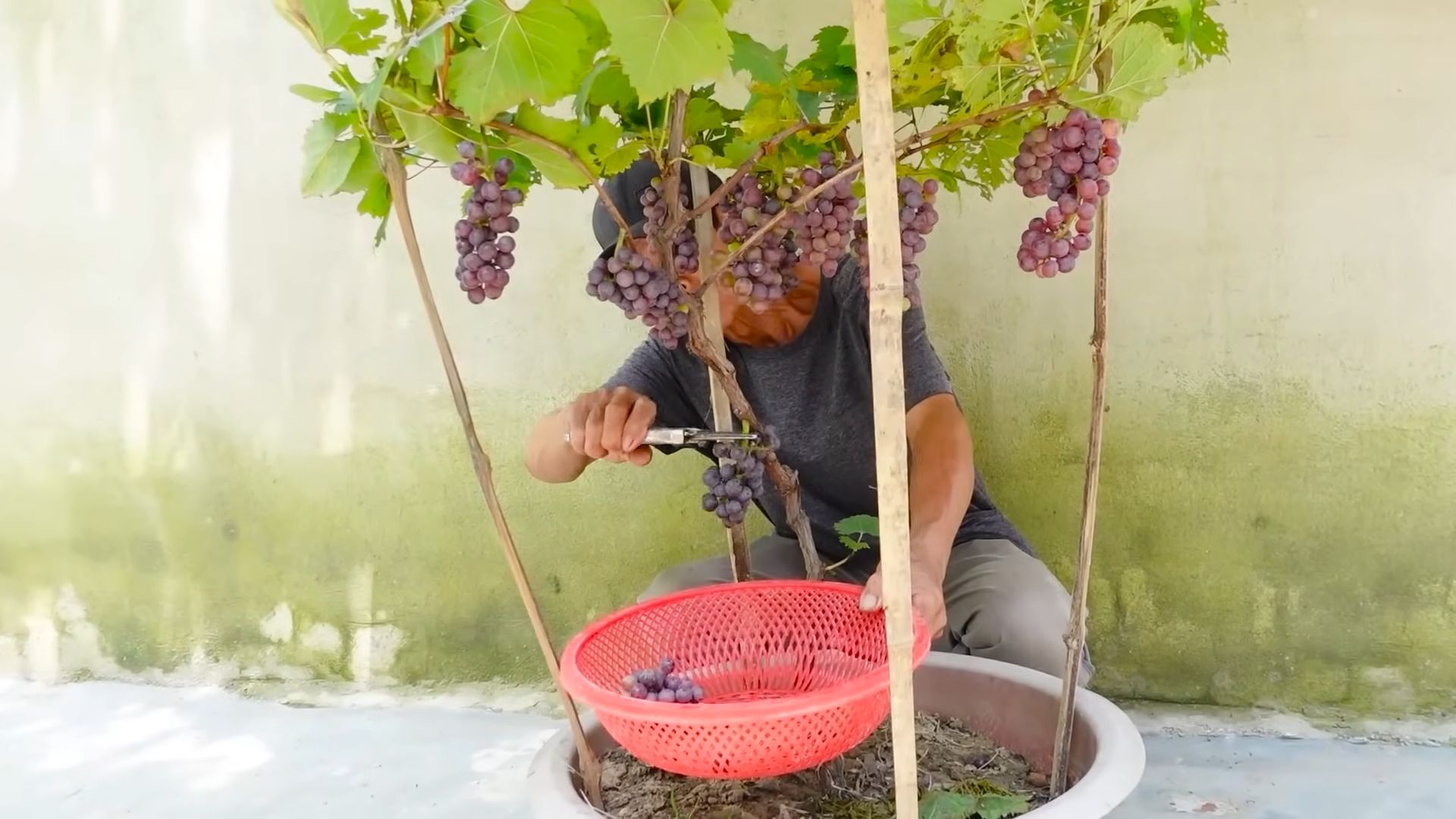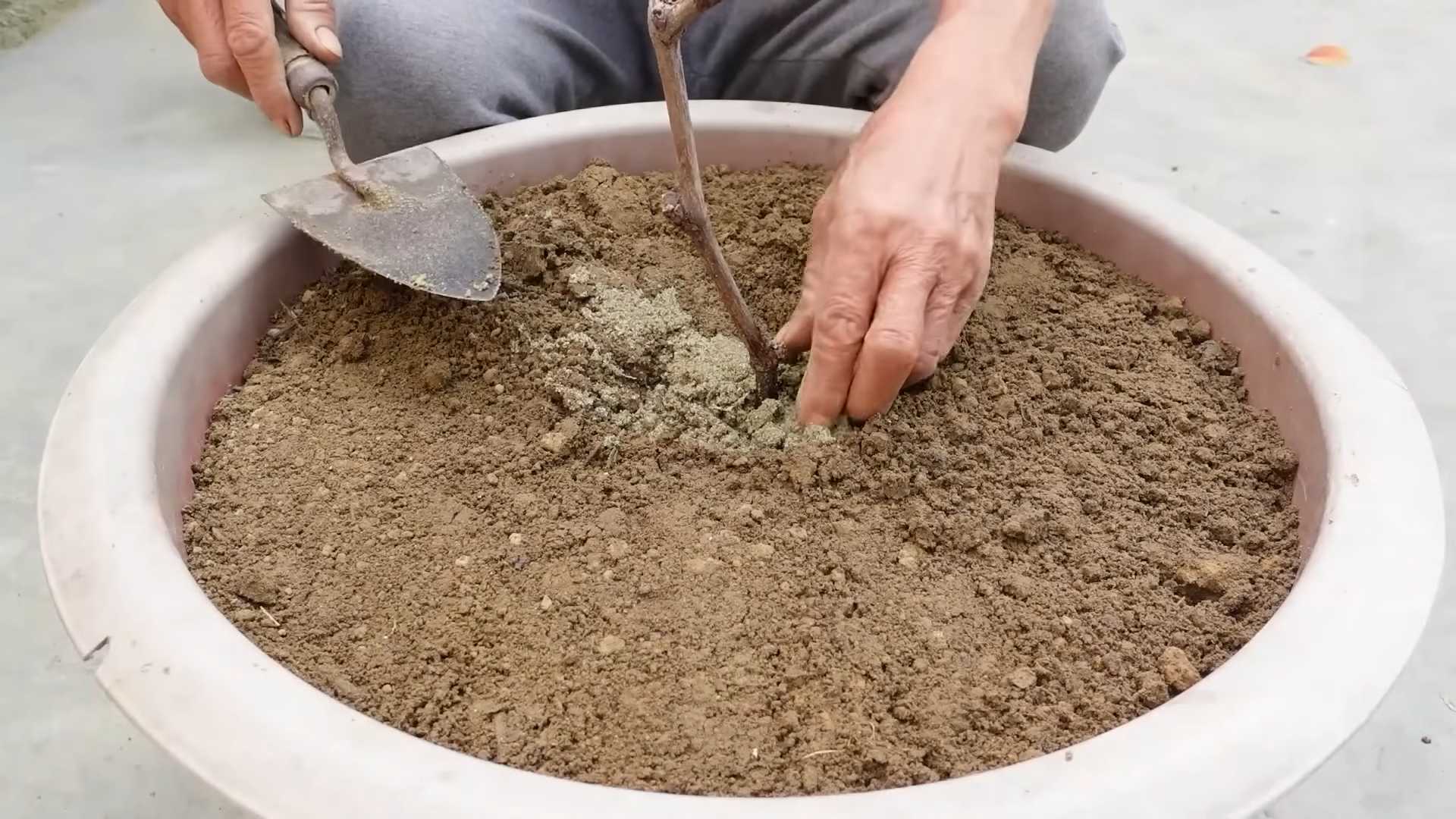Easy homegrown grapes – imagine plucking juicy, sun-ripened grapes straight from your own backyard! Sounds like a dream, right? Well, it doesn’t have to be! For centuries, cultivating grapes has been a symbol of abundance and prosperity, deeply rooted in cultures around the world, from ancient Rome to modern-day vineyards. But you don’t need a sprawling vineyard to enjoy the fruits (pun intended!) of your labor.
Many people believe growing grapes is complicated and requires expert knowledge, but I’m here to tell you it’s totally achievable with a few simple tricks and DIY hacks. This article is your guide to unlocking the secrets of easy homegrown grapes, even if you have limited space or gardening experience. We’ll break down the process into manageable steps, showing you how to choose the right varieties, prepare your soil, and provide the support your vines need to thrive.
Why should you bother? Because nothing beats the taste of fresh, homegrown produce, and the satisfaction of nurturing a plant from a tiny vine to a bountiful source of delicious grapes is incredibly rewarding. Plus, you’ll know exactly what’s going into your food, avoiding any unwanted pesticides or chemicals. So, grab your gardening gloves, and let’s get started on your journey to grape-growing success!

Growing Grapes at Home: A Beginner’s Guide to a Bountiful Harvest
Okay, so you want to grow grapes? Awesome! It might seem intimidating, but trust me, with a little planning and effort, you can be enjoying your own homegrown grapes before you know it. I’m going to walk you through everything you need to know, from choosing the right variety to harvesting your delicious bounty.
Choosing the Right Grape Variety
This is probably the most important decision you’ll make. You need to consider your climate, the amount of space you have, and what you want to use the grapes for (eating fresh, making juice, or even wine!).
* Climate: Different grape varieties thrive in different climates. Some are cold-hardy, while others need long, hot summers. Check your USDA plant hardiness zone to determine which varieties will do well in your area.
* Space: Grape vines can get pretty big! Consider how much space you have available. Some varieties are more compact than others. You’ll also need to think about trellising or other support systems.
* Purpose: Are you planning to eat the grapes fresh off the vine? Or do you want to make juice, jelly, or even wine? Different varieties are better suited for different purposes.
Here are a few popular and relatively easy-to-grow grape varieties:
* ‘Concord’: A classic American grape, known for its strong flavor and use in juice and jelly. Very cold-hardy.
* ‘Niagara’: Another American grape, similar to Concord but with a lighter, sweeter flavor. Also cold-hardy.
* ‘Thompson Seedless’: The most popular table grape in the world! Requires a long, warm growing season.
* ‘Reliance’: A seedless red table grape that is very cold-hardy.
* ‘Mars’: A seedless blue table grape that is disease-resistant and cold-hardy.
Once you’ve considered these factors, do some research and choose a variety that’s right for you. Local nurseries are a great resource for finding varieties that are known to do well in your area.
Preparing Your Planting Site
Grapes need plenty of sunlight and well-drained soil. Here’s how to get your planting site ready:
* Sunlight: Grapes need at least 6-8 hours of direct sunlight per day. Choose a location that gets plenty of sun.
* Soil: Grapes prefer well-drained soil with a pH between 6.0 and 7.0. If your soil is heavy clay, amend it with compost or other organic matter to improve drainage.
* Drainage: Poor drainage is a grape vine killer! Make sure the soil drains well. You can test drainage by digging a hole and filling it with water. If the water doesn’t drain within a few hours, you’ll need to improve the drainage.
* Support System: You’ll need to install a trellis or other support system before you plant your grapes. This will give the vines something to climb on and help to keep the fruit off the ground.
Planting Your Grape Vines
Now for the fun part! Here’s how to plant your grape vines:
1. Timing: The best time to plant grape vines is in early spring or late fall, when the plants are dormant.
2. Dig the Hole: Dig a hole that is twice as wide as the root ball and just as deep.
3. Amend the Soil: Mix some compost or other organic matter into the soil you removed from the hole.
4. Plant the Vine: Gently remove the grape vine from its container and loosen the roots. Place the vine in the hole, making sure that the top of the root ball is level with the ground.
5. Backfill the Hole: Backfill the hole with the amended soil, gently tamping it down around the roots.
6. Water Thoroughly: Water the newly planted vine thoroughly.
7. Mulch: Apply a layer of mulch around the base of the vine to help retain moisture and suppress weeds.
Training and Pruning Your Grape Vines
Training and pruning are essential for getting a good crop of grapes. Here’s a basic overview:
* Training: Training involves guiding the growth of the vine to create a desired shape. This is usually done by attaching the vine to a trellis or other support system.
* Pruning: Pruning involves removing unwanted growth to improve air circulation, sunlight penetration, and fruit production.
There are several different training and pruning systems you can use. The best system for you will depend on the variety of grape you’re growing and the type of support system you’re using. I’d recommend researching the specific needs of your chosen variety.
Here’s a simplified approach for the first few years:
Year 1: Establishing the Trunk
1. Select a Shoot: Choose the strongest, most upright shoot on the vine. This will become the main trunk.
2. Tie it Up: Gently tie the chosen shoot to the trellis or support system.
3. Remove Other Shoots: Remove all other shoots that are growing from the base of the vine. You want to focus all the plant’s energy on growing that single trunk.
4. Pinch Back: Once the trunk reaches the desired height (usually the top wire of your trellis), pinch back the tip to encourage lateral growth.
Year 2: Developing Arms (Cordons)
1. Select Arms: Choose two strong shoots that are growing horizontally from the trunk. These will become the arms (or cordons) of the vine.
2. Tie Them Up: Tie the chosen arms to the trellis, one on each side of the trunk.
3. Remove Other Shoots: Remove any other shoots that are growing from the trunk or the arms.
4. Prune Laterals: In late winter, prune the lateral shoots (the ones growing off the arms) back to 2-3 buds each. These buds will produce the fruiting shoots in the following year.
Year 3 and Beyond: Maintaining the Vine
1. Prune Annually: Every year in late winter, prune the vine to remove dead, damaged, or diseased wood.
2. Thin Fruiting Shoots: Thin out the fruiting shoots to prevent overcrowding and improve fruit quality.
3. Maintain Shape: Continue to train the vine to maintain its desired shape.
Important Note: Pruning can seem scary, but it’s essential for healthy grape production. Don’t be afraid to experiment and learn as you go. There are tons of great resources online and in libraries that can provide more detailed information on grape pruning techniques.
Watering and Fertilizing
Grapes need consistent watering, especially during dry periods. Here’s what you need to know:
* Watering: Water deeply and regularly, especially during the first year. Once the vines are established, they are relatively drought-tolerant, but they still need water during dry spells.
* Fertilizing: Grapes don’t need a lot of fertilizer. In fact, too much fertilizer can actually reduce fruit production. A light application of compost or a balanced fertilizer in the spring is usually sufficient.
* Soil Testing: Consider getting your soil tested to determine if it’s lacking any essential nutrients. This will help you choose the right fertilizer.
Pest and Disease Control
Grapes can be susceptible to a variety of pests and diseases. Here are some common problems and how to deal with them:
* Japanese Beetles: These beetles can skeletonize the leaves of grape vines. Hand-picking them off the vines or using insecticidal soap can help.
* Grape Berry Moth: This moth lays its eggs on the grape berries, and the larvae burrow into the fruit. Using pheromone traps or applying an insecticide can help control this pest.
* Powdery Mildew: This fungal disease causes a white, powdery coating on the leaves and fruit. Improving air circulation and applying a fungicide can help prevent and control powdery mildew.
* Black Rot: This fungal disease causes dark, sunken lesions on the leaves and fruit. Removing infected leaves and fruit and applying a fungicide can help control black rot.
Prevention is Key: The best way to deal with pests and diseases is to prevent them in the first place. Choose disease-resistant varieties, provide good air circulation, and keep your vineyard clean.
Harvesting Your Grapes
Finally, the moment you’ve been waiting for! Here’s how to harvest your grapes:
1. Ripeness: Grapes are ripe when they are fully colored, plump, and easy to pull from the vine. Taste a few grapes to make sure they are sweet and flavorful.
2. Timing: Harvest grapes on a dry day. Wet grapes are more susceptible to spoilage.
3. Cutting: Use pruning shears or scissors to cut the grape clusters from the vine.
4

Conclusion
So, there you have it! Transforming your backyard into a miniature vineyard with this easy homegrown grapes method is not just a fun project; it’s a gateway to enjoying the freshest, most flavorful grapes imaginable. Forget the supermarket varieties that often lack character and taste; with a little effort and this simple DIY trick, you can cultivate grapes bursting with sweetness and unique flavor profiles tailored to your preferences.
This method is a must-try for several compelling reasons. First and foremost, it empowers you to control the entire growing process, ensuring your grapes are free from harmful pesticides and chemicals. You know exactly what goes into nurturing your vines, resulting in a healthier and more delicious final product. Secondly, it’s incredibly rewarding to witness the transformation from a small vine to a bountiful source of fruit. The satisfaction of harvesting your own grapes and sharing them with friends and family is unparalleled. Finally, it’s a cost-effective way to enjoy high-quality grapes. Once your vines are established, they’ll provide you with years of delicious harvests with minimal ongoing expense.
But the beauty of this DIY approach lies in its adaptability. Feel free to experiment with different grape varieties to discover your favorites. Consider planting a mix of red, green, and black grapes for a diverse harvest. You can also explore different training methods, such as growing your grapes on an arbor, trellis, or even a fence, to create a stunning visual display in your garden. For those with limited space, container gardening is a viable option, allowing you to enjoy homegrown grapes even on a balcony or patio.
Don’t be afraid to get creative with your grape harvest! Beyond simply enjoying them fresh, you can use your homegrown grapes to make delicious jams, jellies, juices, or even homemade wine. Imagine the pride of serving a glass of wine made from grapes you nurtured from vine to bottle! The possibilities are endless.
We wholeheartedly encourage you to give this easy homegrown grapes method a try. It’s a rewarding and enriching experience that will connect you with nature and provide you with a delicious and healthy source of fruit. We are confident that you will be amazed by the results.
Once you’ve embarked on your grape-growing journey, we’d love to hear about your experiences! Share your tips, tricks, and successes in the comments below. Let us know which grape varieties you’ve chosen, what challenges you’ve faced, and what delicious creations you’ve made with your homegrown grapes. Your insights will inspire and encourage others to take the plunge and discover the joy of growing their own grapes. Together, we can create a community of grape enthusiasts and share the bounty of our gardens. So, grab your gardening gloves, choose your favorite grape variety, and get ready to experience the magic of homegrown grapes!
Frequently Asked Questions (FAQ)
What is the best time of year to plant grape vines?
The ideal time to plant grape vines is typically in early spring or late fall, when the vines are dormant. This allows them to establish their root systems before the heat of summer or the cold of winter sets in. In warmer climates, late fall planting is often preferred, while in colder regions, early spring planting is recommended to avoid frost damage to newly planted vines. However, if you purchase container-grown grape vines, you can technically plant them at any time during the growing season, provided you take extra care to water them regularly and protect them from extreme temperatures.
What type of soil is best for growing grapes?
Grapes thrive in well-drained soil that is slightly acidic to neutral in pH (between 6.0 and 7.0). The soil should be rich in organic matter and have good drainage to prevent root rot. Avoid heavy clay soils that retain too much water. If your soil is heavy clay, amend it with compost, sand, and other organic materials to improve drainage and aeration. A soil test can help you determine the pH and nutrient levels of your soil and guide you in making necessary amendments.
How much sunlight do grape vines need?
Grape vines require at least 6-8 hours of direct sunlight per day to produce a good crop of grapes. Choose a planting location that receives ample sunlight throughout the day. Insufficient sunlight can lead to poor fruit production and increased susceptibility to diseases. If you live in a particularly hot climate, some afternoon shade may be beneficial to prevent sunburn on the grapes.
How often should I water my grape vines?
Water your grape vines regularly, especially during the first year after planting. Water deeply and less frequently, allowing the soil to dry out slightly between waterings. Overwatering can lead to root rot, while underwatering can stress the vines and reduce fruit production. During hot, dry periods, you may need to water more frequently. Once the vines are established, they are relatively drought-tolerant, but regular watering will still improve fruit quality and yield.
Do I need to prune my grape vines?
Yes, pruning is essential for maintaining the health and productivity of your grape vines. Pruning helps to control the size and shape of the vines, improve air circulation, and promote fruit production. The best time to prune grape vines is in late winter or early spring, before the buds begin to swell. There are several different pruning methods, so research the best method for your specific grape variety and growing conditions.
What are some common pests and diseases that affect grape vines?
Grape vines can be susceptible to a variety of pests and diseases, including aphids, Japanese beetles, powdery mildew, and black rot. Regularly inspect your vines for signs of pests or diseases and take appropriate action to control them. Organic pest control methods, such as insecticidal soap and neem oil, can be effective for controlling many common pests. Fungicides can be used to prevent or treat fungal diseases. Proper pruning and good air circulation can also help to reduce the risk of disease.
How long does it take for grape vines to produce fruit?
Grape vines typically take 2-3 years to begin producing fruit. The first year after planting, the vines will focus on establishing their root systems. In the second year, they may produce a small crop of grapes. By the third year, they should be producing a more substantial harvest. The exact time it takes for vines to produce fruit will depend on the grape variety, growing conditions, and pruning practices.
Can I grow grapes in containers?
Yes, you can grow grapes in containers, but you will need to choose a large container (at least 15-20 gallons) and a grape variety that is well-suited for container growing. Dwarf or compact grape varieties are often the best choice for containers. Use a well-draining potting mix and water regularly. Container-grown grape vines will also need to be fertilized more frequently than those grown in the ground.
How do I know when my grapes are ripe?
The best way to determine if your grapes are ripe is to taste them. Ripe grapes will be sweet and juicy, with a good balance of acidity. The color of the grapes will also change as they ripen, depending on the variety. You can also check the sugar content of the grapes using a refractometer. Harvest your grapes when they have reached the desired level of sweetness.
What can I do with my homegrown grapes?
The possibilities are endless! You can enjoy them fresh, make grape juice, jelly, jam, or even wine. You can also use them in baking, salads, or as a garnish. Homegrown grapes are a delicious and versatile ingredient that can be enjoyed in many different ways.




Leave a Comment